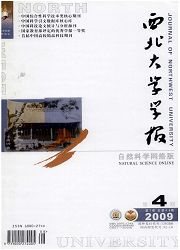

 中文摘要:
中文摘要:
医学影像设备由于外在和内在因素的影响,所成图像对比度较低。运用小波、超小波增强算法,由于基函数需预先设定,无法自适应分析局部特性,导致增强后图像引入较大的噪声,图像细节出现畸变。二维经验模式分解(BEMD)可以数据自驱动分析局部数据;但由于插值算法或极值的影响,分解分量存在斑块或斑点的缺陷,影响后续处理。针对这种情况,提出了运用随局部数据自适应调整的滑动权值函数的滑动权值经验模式分解(SWEMD),解决了BEMD的缺陷。将SWEMD引入医学图像增强,并结合提出的非线性增强规则,能够更好地增强原始图像,增强图像的细节清晰无变形,对比度适中。实验证明该算法的增强效果优于目前的图像增强算法。
 英文摘要:
英文摘要:
Since the equipment of medical imaging is influenced by the external and internal facts, the images have low contrast. The base function of wavelet and super-wavelet needs to be predefined, so that the local data characteristics are not adaptively analyzed. Meanwhile, the more noise will be induced in enhancement process which produces a distortion in details. Bi-dimensional empirical mode decomposition can analyze the local data by data driver. Because of the existence of the gray plaques or spot in the components, the traditional BEMD is not suitable for analyzing local data, and the drawbacks affect its application in image processing. In view of this, the sliding weighted empirical mode decomposition (SWEMD) is proposed which is more suitable for analysis of the de- tail feature. To overcome the shortcomings of BEMD, the sliding weighted functions which are adaptive changed with local data are introduced. When SWEMD is introduced to the medical image enhancement and combines with the presented nonlinear enhancement rule, the images are enhanced better. The details of the enhanced image are not only more clear but also undistorted, and the contrast is suitable. The experiments have shown that the proposed algorithm is efficient in image enhancement and better than other current algorithms.
 同期刊论文项目
同期刊论文项目
 同项目期刊论文
同项目期刊论文
 期刊信息
期刊信息
